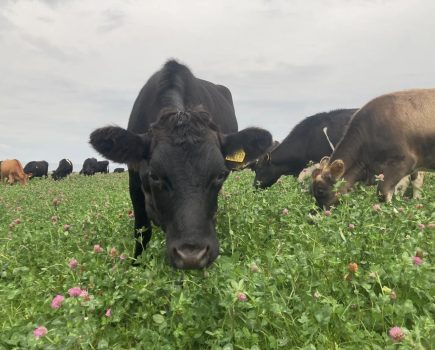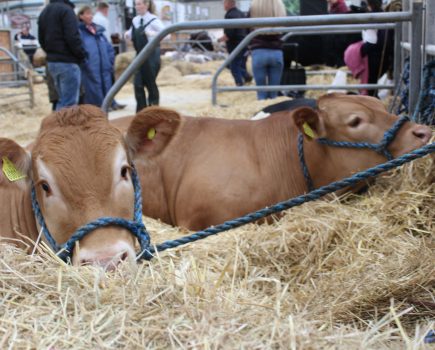Mary Castell and Jenny White tackle bio security and zoonotic diseases
These are diseases which can be transmitted from animals to humans, and are sometimes life threatening in humans. Some zoonotic diseases, for example, Anthrax and Q Fever, are extremely rare in the UK or, like Brucella melintensis and Brucella arbortus in the UK, were eradicated some years ago. The Brucella melintensis organism is shed into milk but would only be a problem in raw milk as heat treatment kills it. It’s the cause of Brucellosis or Malta fever and anyone drinking raw goat’s milk abroad should be aware of the dangers.Most at risk from zoonotic diseases, in general, are vets and veterinary laboratory staff, but even here, the figure is very low. However, it’s important to let the doctor know if someone sick has been in contact with sheep or goats. If the doctor has difficulty reaching a diagnosis, he should be given the telephone number of your vet.Infections connected with lambing and kiddingPregnant women, small children, and anyone with reduced immunity run a higher risk of infection, and shouldn’t therefore assist at lambing or kidding, help with newborn lambs or kids or handle heavily contaminated clothing. Foetal material could be carrying infection even though the goat or ewe appears healthy. Young children should be kept away from the lambing shed and not allowed to hold or stroke a young lamb. When they handle an older lamb, they should be taught to wash their hands afterwards. Anyone wearing soiled garments should be encouraged to put them straight into the washing machine when they return to the farmhouse. The main infective agents are the foetus, the placenta, the birth fluids, and lambs suffering from diarrhoea. For these reasons, lambs shouldn’t be brought into the farmhouse. When they need warming, they can be placed under a heat lamp in a pen adjacent to their mother, or in a warming box close to the lambing shed.When abortions occur, the ewe should be isolated, tagged or given some other permanent marking, and kept separate from the rest of the flock for a minimum of one month. The vet should be contacted, and the aborted lamb and afterbirth put in a clean plastic bag, so that they can be produced for diagnosis at a laboratory, should this prove necessary.Chlamydia (enzootic abortion) This is the most common cause of infectious abortion in sheep, and is hard to eradicate. It’s caused by a bacterium, Chlamydia psittaci, which is transmitted to other ewes when they find and lick the products of an abortion. These abortions usually take place during the last two weeks of pregnancy, and although a vaccine exists, it doesn’t cover all types of the disease. This disease must be taken very seriously as it can be life threatening in pregnant women. The vet may advise that the holding be restocked with sheep from a certified zoonotic-free flock.Abortion in goatsThere are numerous reasons for a goat to abort, including toxoplasma, listeria, salmonella and chlamydia. It could be as a result of an infection, vitamin A deficiency or pregnancy toxaemia. It’s wise to have any case of abortion investigated by a vet and essential that aborted material is handled with scrupulous attention to hygiene in case infection was the cause. Aborted material should never be handled with bare hands. Always wear gloves and be prepared to burn contaminated bedding and any debris that hasn’t been reserved in a polythene bag for laboratory examination. Toxoplasmosis This is the second most common cause of abortion in sheep. The agent is an organism called Toxoplasma gondii, which can infect many animals but only multiplies in cats. Young cats are the main carriers of the disease, which they acquire when they eat their first infected rodent. They excrete great numbers of eggs in their droppings for a week or so, but then recover and become immune.People can become infected by handling cat litter, eating undercooked meat, coming in contact with the faeces of infected sheep, or by handling an aborting ewe. Children can become infected by playing in a sandpit contaminated by cats. Cats are also responsible for transmitting the disease to sheep, by contaminating their hay or grain when they lie in the hayrack or feed troughs or on bales of hay or straw, or make themselves comfortable on the sheep bedding. For these reasons, grazing for pregnant ewes shouldn’t be spread with old bedding, which may be contaminated. In most people, the infection is very mild or not even noticed, but in pregnant women, toxoplasma can cause defects in the unborn child. A pregnant woman who has been in contact with infected sheep should contact her doctor immediately to arrange for a blood test because the risk of damage to the foetus is considerable. The number of cats on the farm should be controlled by spaying and castrating, and young cats should be kept out of barns and animal housing.Sheep infected in the first two months of pregnancy lose their embryos or foetuses. In the third or fourth month, the lamb is either dead, mummified or extremely weak. Infection in the final month allows the ewe to lamb normally, but the lamb is infected. However, both the ewe and her lamb will have acquired a life-long immunity.A vet should be consulted whenever abortion occurs. He may advise that the ewes be exposed to contaminated areas, to gain immunity, or that they take medication during the next pregnancy.Listeriosis Listeria seems to be of interest to the media only when it’s connected with cheese but my understanding is that many more people contract listeriosis from eating badly washed salad leaves. It’s caused by yet another bacterium, Listeria monocytogenes. It gives rise to no problems when present in low numbers in the soil and in the gut of animals and humans. However, when silage is badly made, in optimum conditions of moisture and temperature, soil that has inadvertently been mixed in the silage crop generates massive amounts of listeria. Poorly made and badly stored hay have also been blamed. Contaminated soil may be ingested by the sheep and goats, with very high levels of bacteria. Young sheep may become infected when they have lesions in the mouth caused by erupting teeth. The result may be abortions, or blood or brain infections.There are three forms of listeriosis that can affect goats. The abortion form isn’t common but should be considered if a goat aborts. The septicaemia form, which doesn’t appear to be well documented, shows the classic symptoms of blood poisoning. The encephalitis form is most commonly seen. It’s sometimes referred to as the circling disease because paralysis of the goat’s throat and neck causes it to walk in circles. The disease can overwhelm a goat in a matter of hours. It may never exhibit any circling behaviour because it goes down or dies without showing those symptoms. If a goat in milk dies from listeriosis, she will have been shedding the bacteria into her milk. The milk from a poorly goat should always be discarded but in the case of listeriosis, it may be a wise precaution to identify and discard any milk she produced within a day or two of her becoming ill. This article is from the August 2006 issue of Country Smallholding magazine. << To order back issues click the link to the left.







